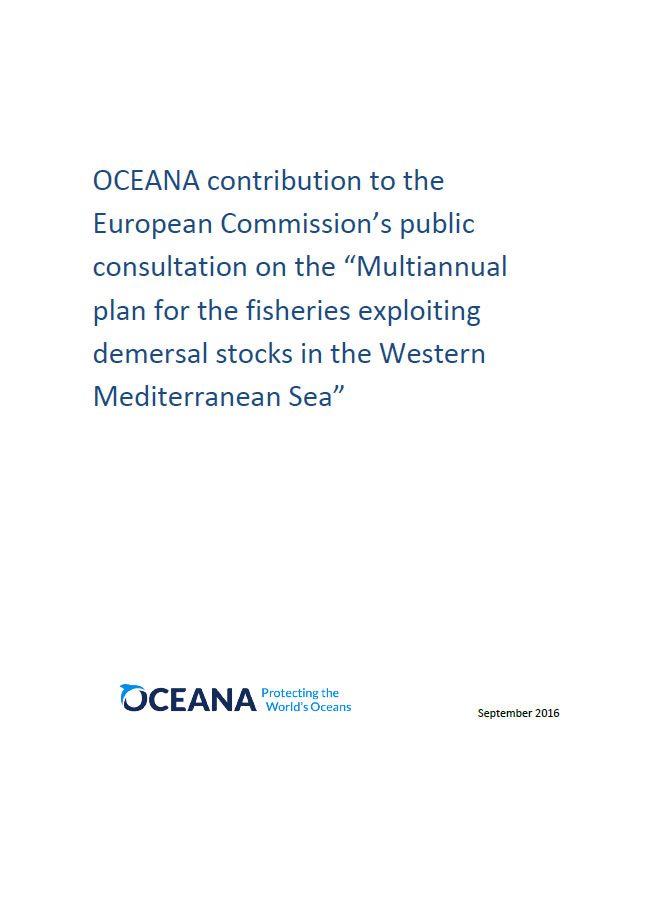Report | September 23, 2016
OCEANA contribution to the European Commission’s public consultation on the “Multiannual plan for the fisheries exploiting demersal stocks in the Western Mediterranean Sea”
The entry into force of the new European Common Fisheries Policy (CFP) in 2014 was an historic benchmark as it defines the path towards European Union (EU) stocks recovery mainly through Multiannual Management Plans (MAP). These should be aimed at rebuilding stocks to Maximum Sustainable Yield (MSY) levels and implementing an ecosystem-based approach to fishing management.
In light of the new EU Commission Consultation for a MAP in the Western Mediterranean, Oceana wants to provide its vision on how to transform this plan into a model of CFP implementation that can bring health back to depleted Mediterranean stocks.
This document provides a framework for the new Western Mediterranean MAP and details the key elements it should include. In particular:
- The scope of the plan. The plan should include all fish stocks commercially exploited by the EU fleet in the Western Mediterranean area (as defined by the FAO) and which are non-shared stocks with third countries, regardless of the jurisdictional status of the waters.
- Objectives, a timeframe, quantifiable reference points and safeguards. The plan should aim at restoring and maintaining all commercially exploited demersal stocks above levels capable of producing MSY, no later than 2020, as laid out in the CFP.
- Changing the paradigm: fishing opportunities according to scientific advice. Input controls currently used in the Mediterranean Sea as national fishing effort limits and technical measures, have been proven to be absolutely inefficient in rebuilding depleted demersal stocks. Oceana proposes setting output control rules, i.e catch limits, in addition to input rules, i.e. effort limits.
- Reducing unwanted catches. As an essential element of the EU landing obligation, Oceana proposes the adoption of spatial management measures and the definition of specific rules when a given threshold of unwanted catches is met.
- Protecting juveniles and spawners. Juveniles and spawners are essential to restoring and maintaining healthy stocks. Therefore, we propose the adoption of a network of “stock recovery areas”, a minimum conservation reference size (MCRS) according to the scientifically assessed size of reproductive maturity of the concerned species, and an extension of the bottom-towed gears ban until 100m depths.
- Ensuring the conservation of sensitive habitats (SH) and vulnerable marine ecosystems (VME). Identify and close the areas where these habitats are present to all bottom-towed gears.
- Monitoring, control and surveillance (MCS). A comprehensive set of MCS measures is essential to ensuring the effectiveness of the plan’s implementation.
- Data collection, scientific advice and scientific research. Reliable data and scientific information is essential to be able to establish accurate and effective fisheries management. It is therefore necessary to increase the number of stocks assessed and the frequency of the assessments, as well as improve catch register statistics to make them more reliable.


